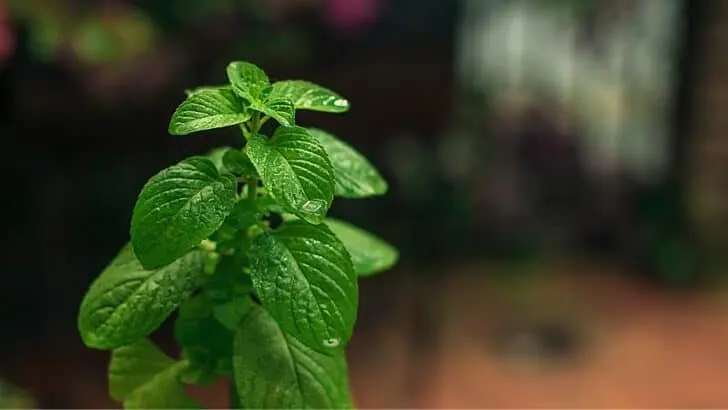Mint plants can sometimes prove harmful as they compete with other plants for the necessary nutrients. They spread quickly, and their tubers and roots might harm other plants.
Hence, it’s best to plant them in their pots whenever possible. However, some plants can grow safely as mint companion plants.
Mint companions not only remain safe from the harm caused by mint but also benefit from its scent, which keeps pests from invading and deteriorating these plants (pest-repellent).
Following is the plant list that can grow close to mint without harm.
21 Best Mint Companion Plants
- Carrots
- Tomatoes
- Beans
- Marigolds
- Cabbage
- Geraniums
- Dahlias
- Sweet Corn
- Radish
- Kale
- Beets
- Brussels Sprouts
- Peas
- Lettuce
- Salad Burnet
- Squash
- Kohlrabi
- Eggplant
- Bell peppers
- Broccoli
- Oregano
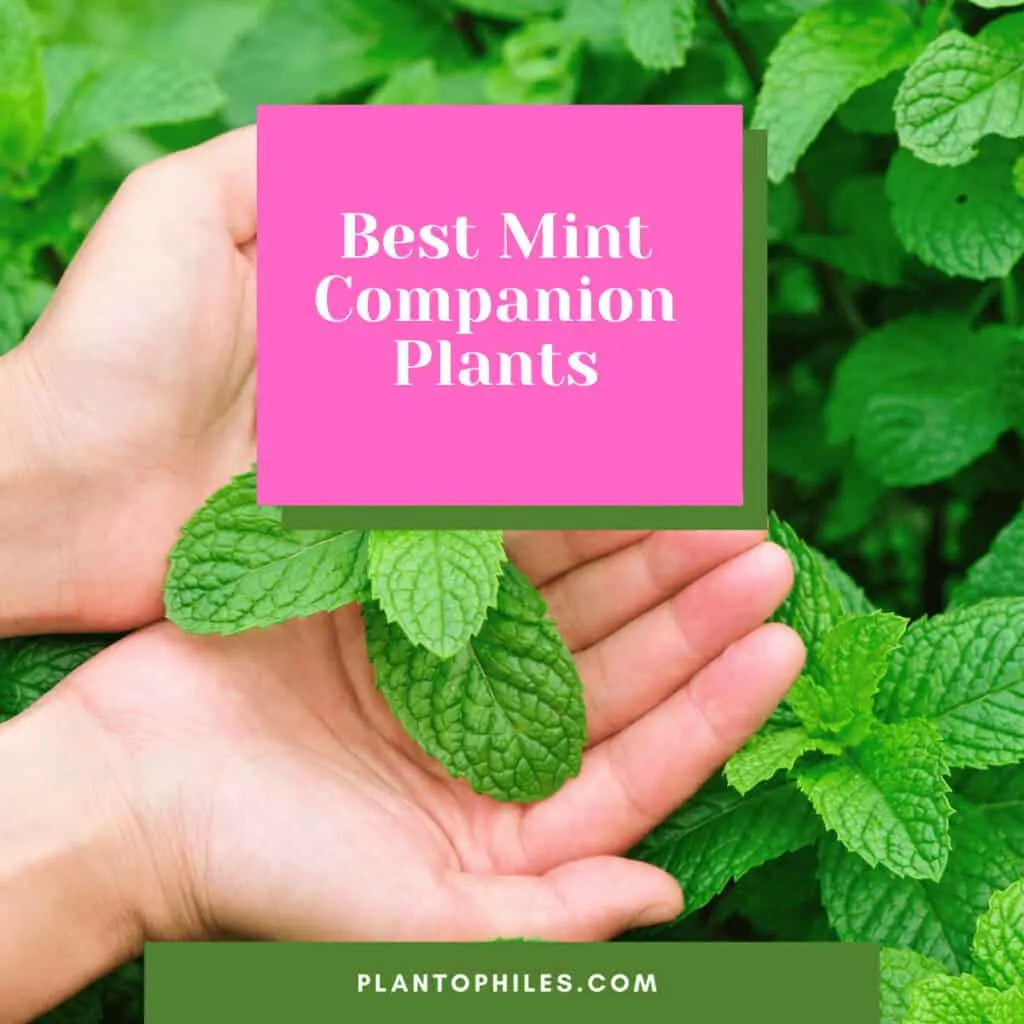
Table of Contents
Companion Plants That Grow Well With Mint
The fruity and aromatic Mint grows best in full sun, supported by partial shade in warmer regions.
Mint plants require a lot of water, especially in hot climates.
It is a perennial herb that is best harvested frequently by pinching several leaves each time that can be used to infuse teas and dishes.
Harvest in late autumn to early winter, according to RHS.
Mint is spreading heavily as its tubers are growing underground, covering a wide area. Therefore pot planting is suggested. If grown in the ground, companion plants need to be chosen carefully.
1. Carrots
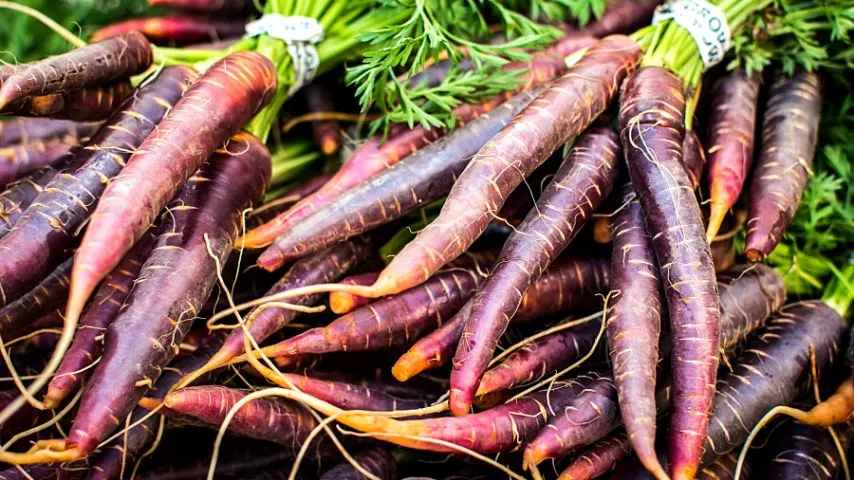
A carrot grows continuously once planted. Its maturation isn’t time-consuming, and it is usually harvested mid-spring.
Planting carrots with mint helps them as the scent of the mint keeps the carrot root flying away, and the plantation remains safe.
The carrot root fly is also known as Psila Rosae, according to CABI.org.
The binomial nomenclature of carrots and the specifics of their growth are as follows:
- Scientific name: Daucus carota
- Family: Apiaceae
- Temperature: 55° – 75°F (12.77° – 23.88°C)
- Soil: loose, sandy loam, well-drained
- pH: 6.0 – 7.0
- Environment: full sun, well-dug ground
- Humidity: 90% – 95%
2. Tomatoes
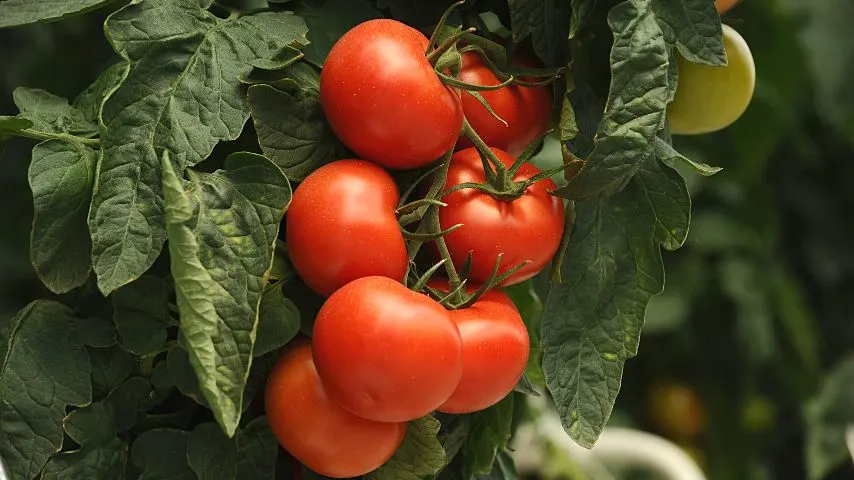
A well-ripe, red tomato not only possesses a juicy taste but is also relatively easy to grow.
Tomato plantation does not need much space, and they can grow under any condition except extremely low temperatures.
Their maturation is lengthy, so it is always better to start early.
The binomial nomenclature of tomatoes and the specifics of their growth include:
- Scientific name: Solanum Lycopersicum
- Family: Solanaceae
- Temperature: 70° – 85°F (21.11° – 29.44°C)
- Soil: well-drained, fertile loam
- pH: 6.2 – 6.8
- Environment: full sun
- Humidity: 65% – 85%
3. Beans
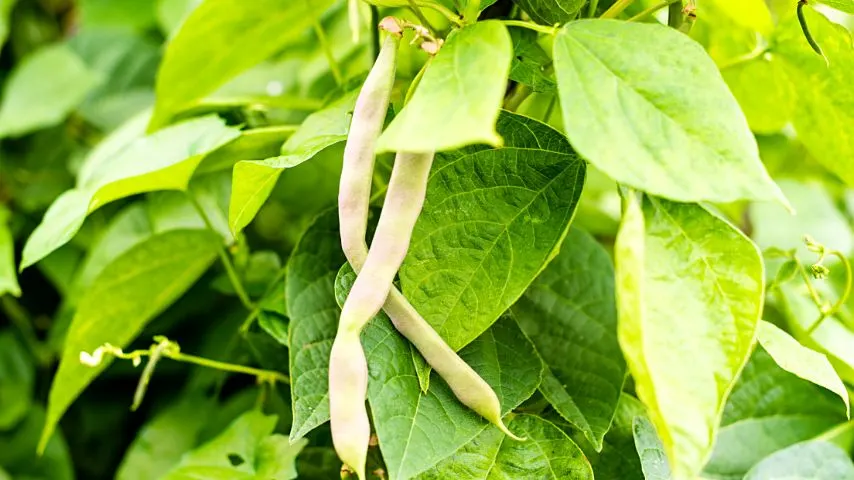
Beans grow all year, but it is best to plant them in spring. They grow quickly, and the flower appears within two months of planting.
It is better not to sow beans early as they can rot in the cold and require warm conditions to flourish.
The binomial nomenclature of beans and the specifics of their growth include:
- Scientific name: Phaseolus vulgaris
- Family: Fabaceae
- Temperature: 65° – 85°F (18.33° – 29.44°C)
- Soil: well-drained, clay or silt loam
- pH: 6.0 – 7.0
- Environment: full sun and good air circulation
- Humidity: 45% – 55%
4. Marigolds
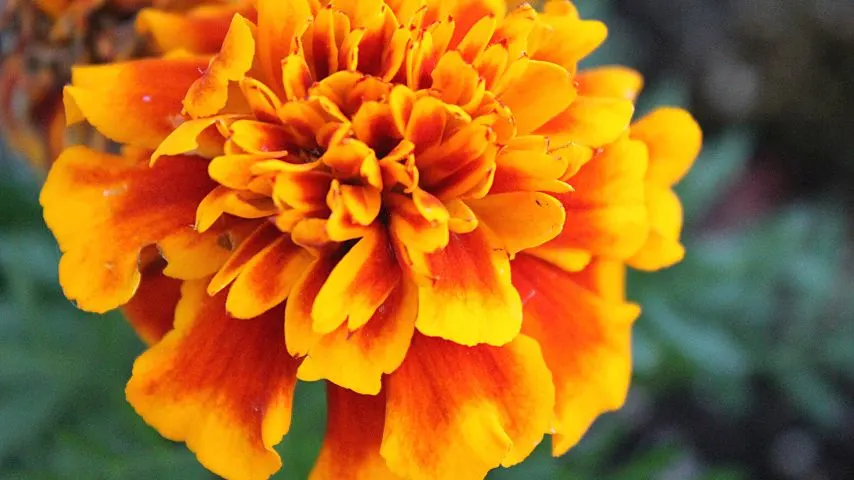
These are annual plants ready to lighten up your gardens during the summer or autumn. They bloom bright, showing off their gold color all summer.
Marigolds grow better during warm conditions and bright sunlight. Although they can grow in any soil, it is better to use well-drained fertile soil.
The binomial nomenclature of marigolds and the specifics of their growth include:
- Scientific name: Calendula officinalis
- Family: Calenduleae
- Temperature: 64.4° – 68°F (18° – 20°C)
- Soil: highly fertile, loose, well-drained, organic garden loam
- pH: 5.8 – 6.2
- Environment: full sun
- Humidity: 90%
5. Cabbage
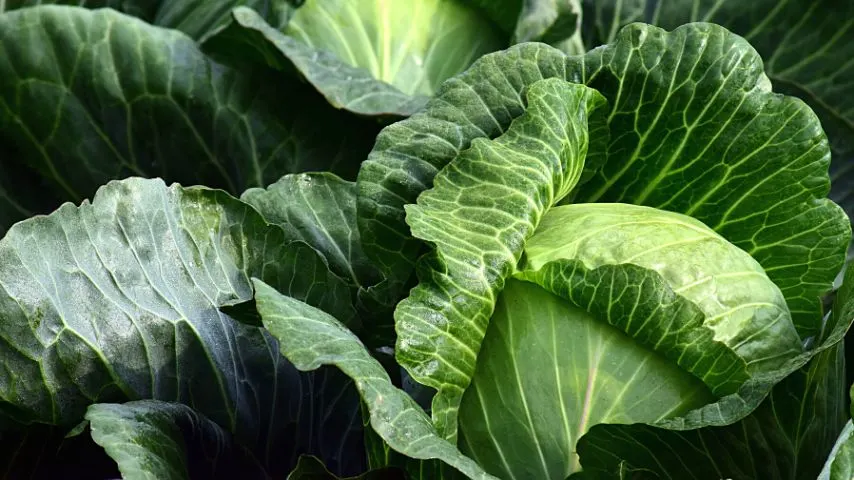
Cabbage is an easy-to-grow, nutritious vegetable. Planting a cabbage at the right time, under the right conditions, can ensure great production.
Cabbages produce leaves in shades of green as well as red and purple, along with various leaf textures and shapes.
In addition, cabbages have a long planting season.
The binomial nomenclature of cabbage and the specifics of their growth include:
- Scientific name: Brassica oleracea
- Family: Brassicaceae
- Temperature: 60° – 70°F (16° – 21°C)
- Soil: fertile, well-drained, medium to heavy loam
- pH: 6.0 – 7.0
- Environment: sunny
- Humidity: 90%
6. Geraniums
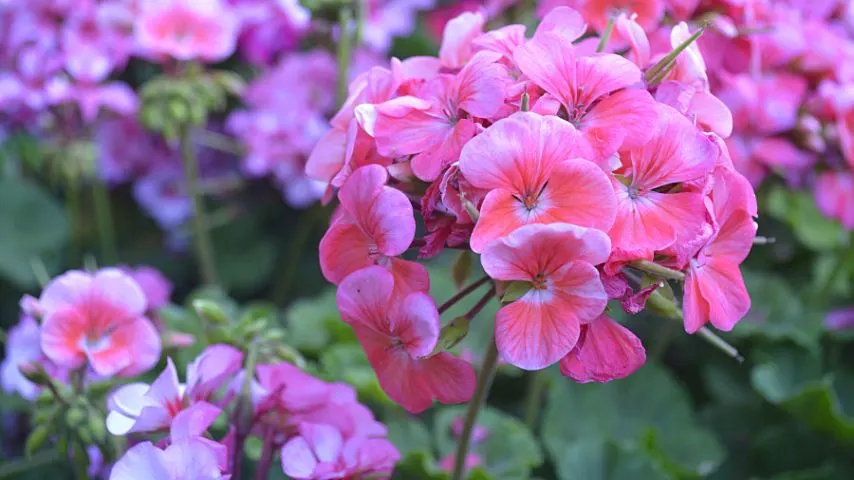
Geraniums are the gardener’s favorite as they grow easily and possess beautiful colors with a lovely scent.
They suit well as houseplants but should be kept indoors during late summer or early fall.
To ensure healthy growth, it is best to keep check of their color and size for any changes.
The binomial nomenclature of geraniums includes:
- Scientific name: Pelargonium graveolens
- Family: Geraniaceae
- Temperature: 45° – 80°F (7.22° – 26.66°C)
- Soil: loose, organic, well-draining soil
- pH: 6.0 – 6.5
- Environment: plenty of morning sunlight with a mix of afternoon shade
- Humidity: 80%
7. Dahlias
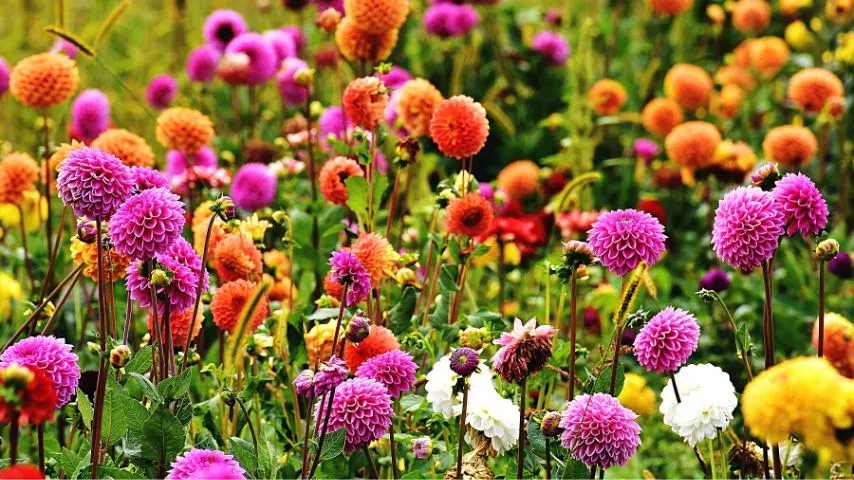
Dahlias are one of the most eye-catching blooms that blossom from midsummer up to autumn. They flourish in moderate weather conditions and take up to 120 days to reach optimal growth.
Dahlias love some good hours of morning sunlight. Planting them in cold soil isn’t, however, advised.
The binomial nomenclature of dahlias and the specifics of their growth include:
- Scientific name: Dahlia pinnata
- Family: Asteraceae
- Temperature: 65° – 75°F (18.33° – 23.88°C)
- Soil: sandy, well-draining soil
- pH: 6.5 – 7.0
- Environment: full sun
- Humidity: 75% – 85%
8. Sweet Corn
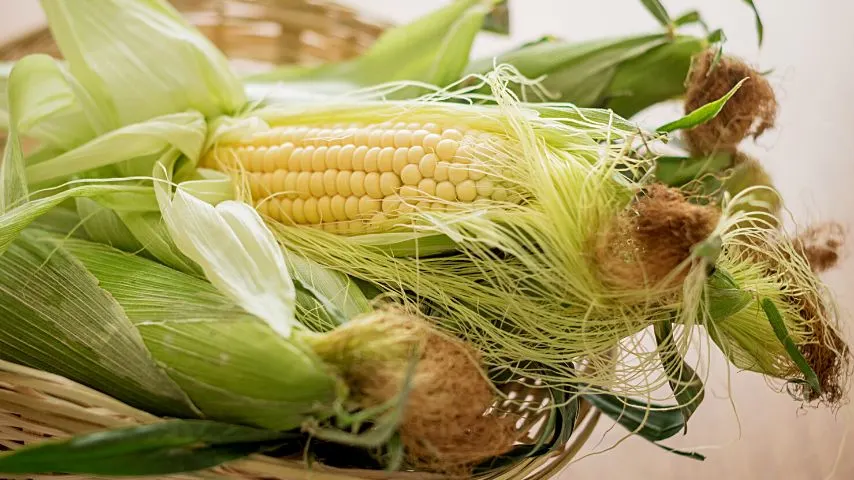
Sweet Corn grows in a warm, sunny, sheltered, and wind-protected environment. Planting them in blocks instead of rows to ensure better wind pollination is good.
Sweet Corn should only be harvested when needed as it loses its taste quickly after picking. It ripens quite well post-mid-summer.
The binomial nomenclature of sweet corn and the specifics of their growth include:
- Scientific name: Zea mays
- Family: Gramineae
- Temperature: 70° – 86°F (21.11° – 30°C)
- Soil: well-drained, fertile soil
- pH: 6.0 – 6.8
- Environment: sunny, abundant water supply
- Humidity: 72% – 73%
9. Radish
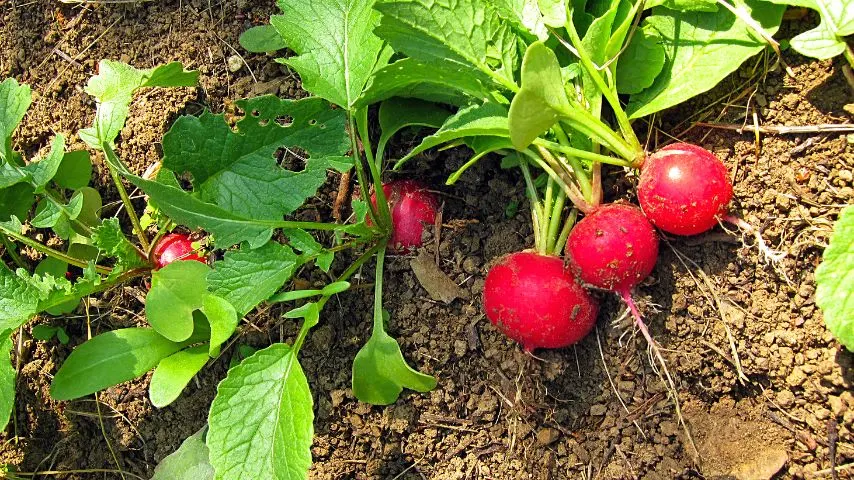
Fresh from the garden, radish adds to the salad’s color and flavor.
Like their usage, they are easy to grow and ready to harvest in 20 to 50 days. Radishes can be planted soon after working up your soil in spring.
The binomial nomenclature of radishes and the specifics of their growth include:
- Scientific name: Raphanus sativus
- Family: Brassicaceae
- Temperature: 60° – 65°F (15.55° – 18.33°C)
- Soil: Fertile, well-drained, deep, sandy, organic soils
- pH: 6.5 – 7.0
- Environment: sunny and moist
- Humidity: 95% – 100%
10. Kale
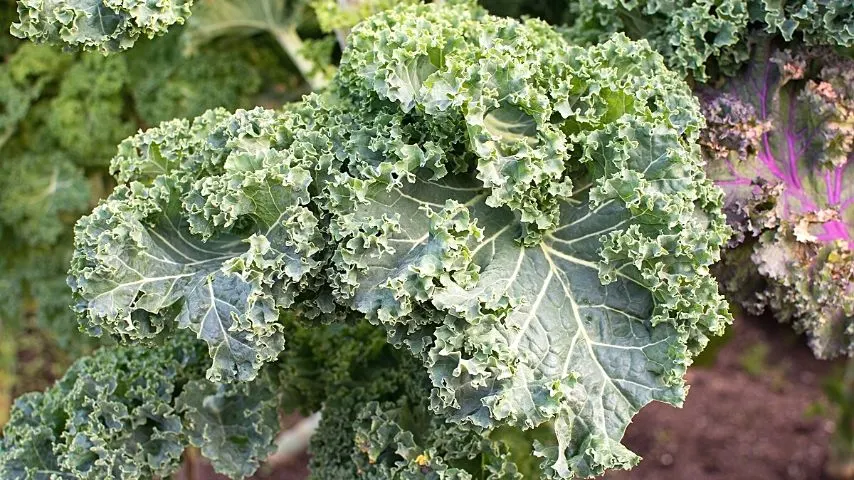
Kale is an iron and vitamin-rich vegetable. It is a robust and adaptable plant and can even grow under cold conditions.
Moreover, it can be planted in almost any soil despite its preference for well-drained soil. Regardless of its versatility, it is better to grow it properly to ensure healthy growth.
The binomial nomenclature of kale and the specifics of its growth include:
- Scientific name: Brassica oleracea
- Family: Brassicaceae
- Temperature: 65° – 75°F (18.33° – 23.88°C)
- Soil: well-drained, organic loam
- pH: 6.0 – 7.5
- Environment: full sun or partial shade
- Humidity: 95% – 100%
11. Beets
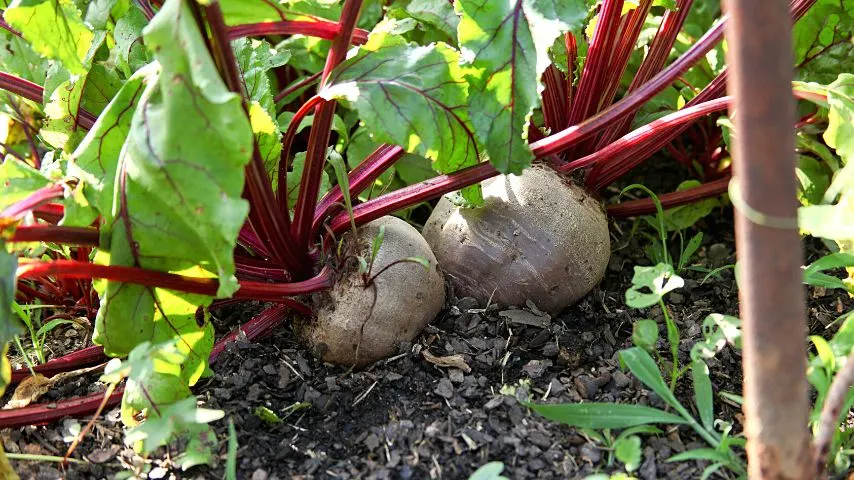
Beets are tasty red vegetables easily grown in a home garden. The excellent growth of a beet demands attention to its soil.
They can be grown all winter in southern regions as they prefer cool weather.
Beets are ready to be harvested 7 to 8 weeks after plantation once they reach the desired size.
The binomial nomenclature of beets and the specifics of their growth include:
- Scientific name: Beta vulgaris
- Family: Amaranthaceae
- Temperature: 50° – 70°F (10° – 21.11°C)
- Soil: Sandy, well-drained soil
- pH: 5.3 – 6.6
- Environment: partial shade
- Humidity: 90% – 98%
12. Brussels Sprouts
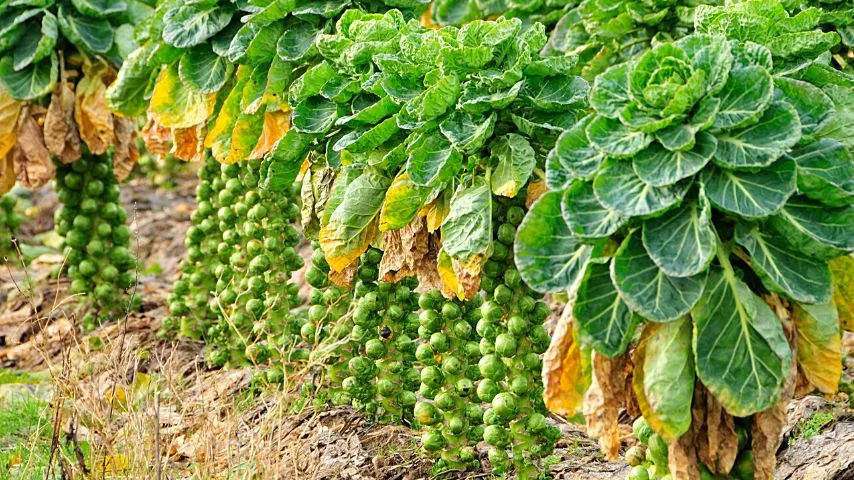
If you aren’t growing Brussels Sprouts in your garden, you are missing out on the tasty flavor.
Growing sprouts is quite similar to growing cabbage or kale as they belong to the same group of plants, and they all grow better in cool conditions.
They require ample time to mature, and it is best to plant them during mid-summer, so they are ready for extraction by fall.
The binomial nomenclature of Brussels sprouts and the specifics of their growth include:
- Scientific name: Brassica oleracea
- Family: Brassicaceae
- Temperature: 60° – 65°F (15.55° – 18.33°C)
- Soil: well-drained, organic loam
- pH: 6.0 – 7.0
- Environment: full sun
- Humidity: 95% – 100%
13. Peas
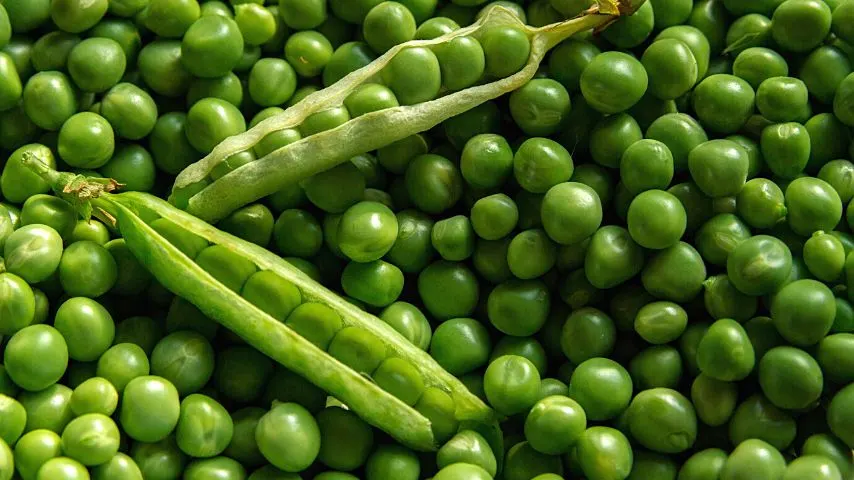
Peas are another nutritious, tasty, and easy-to-grow legume. Just a little attention and care can result in a desirable production.
They do not require much fertilization and can work with some compost added to the soil.
They prefer cold outdoors, so it is better to sow them as soon as the ground is ready post-winter.
The binomial nomenclature of peas and the specifics of their growth include:
- Scientific name: Pisum sativum
- Family: Fabaceae
- Temperature: 55° – 65°F (12.77° – 18.33°C)
- Soil: sandy to heavy, well-drained soil
- pH: 6.0 – 7.5
- Environment: full sun
- Humidity: 90% – 98%
14. Lettuce
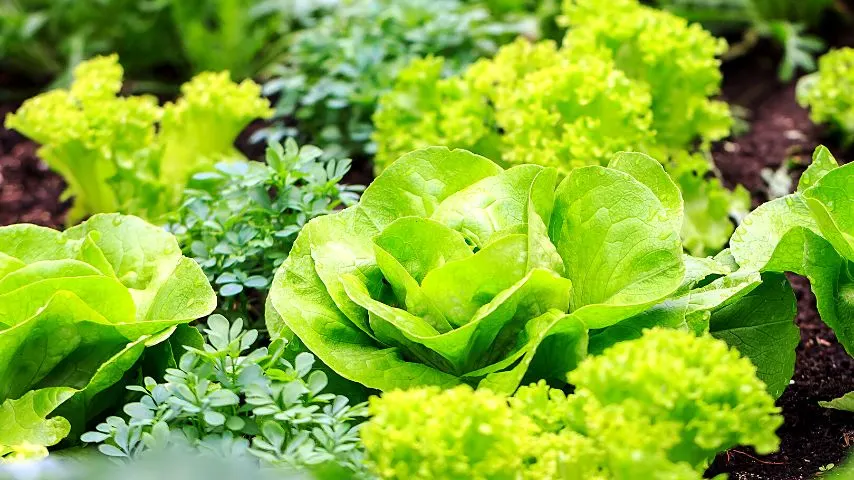
Growing lettuce is a good idea if you feel like adding a fresh green salad to your table. Their suitable weather conditions include the spring and fall seasons.
It can be planted indoors as well. A quick healthy growth ensures flavor and tenderness, which can be attained by adding compost or fertilizer to the soil.
The binomial nomenclature of lettuce and the specifics of their growth include:
- Scientific name: Luctuca sativa
- Family: Asteraceae
- Temperature: 60° – 65°F (15.55° – 18.33°C)
- Soil: loose, well-draining soil
- pH: 6.0 – 7.0
- Environment: full sun or light shade
- Humidity: 50% – 70%
15. Salad Burnet
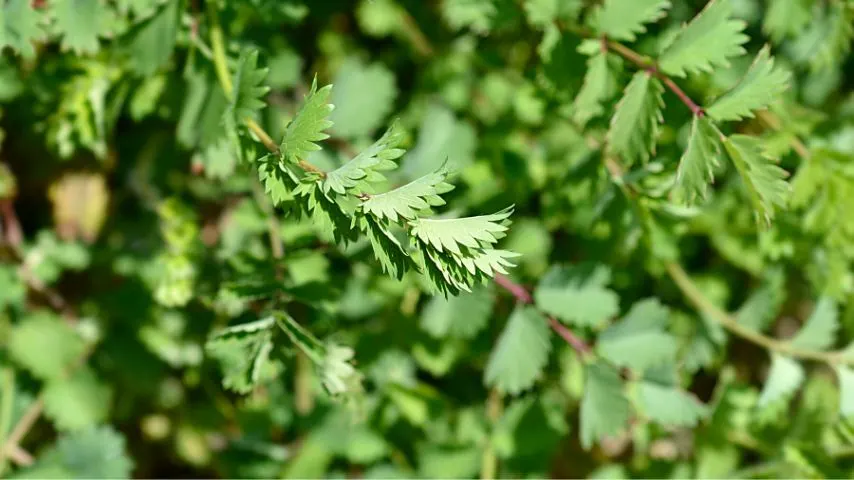
Salad Burnet is also an easy-to-grow plant. Its fresh taste adds to the flavor of your salad.
This salad needs watering during dry conditions and cannot tolerate transplanting. As the plant ages, it loses taste, so it is better to remove older plants after some time.
With the consistent maintenance of desirable conditions, salad burnet grows pretty fast.
The binomial nomenclature of salad burnet and the specifics of its care are:
- Scientific name: Sanguisorba minor
- Family: Rosaceae
- Temperature: < 77°F (< 25°C)
- Soil: well-drained sandy loam
- pH: 6.5 – 8.0
- Environment: full sun or partial shade
- Humidity: 60% – 70%
16. Squash
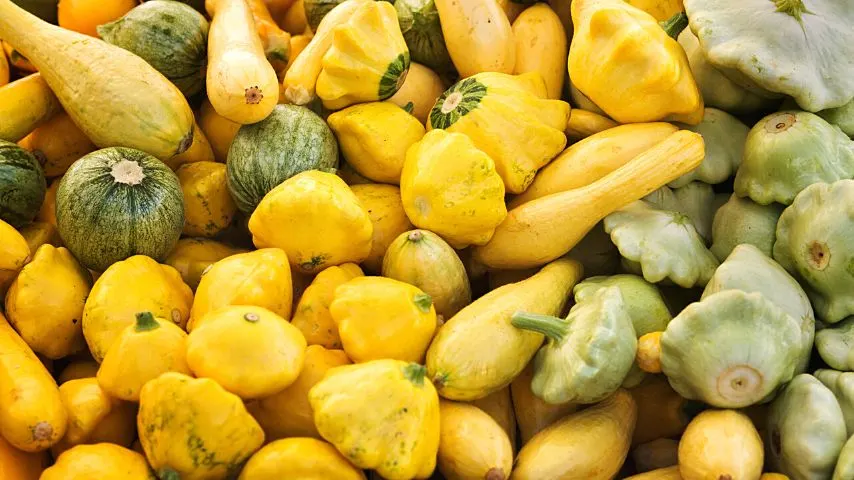
Squash is a vegetable that you can store in the fridge without rotting. It starts as a seed, and soon after reaching the flowering stage, it grows quickly.
Summer squash is a versatile plant that produces various vegetables with different flavors that can be used for different purposes.
The binomial nomenclature of squash and the specifics of their growth include:
- Scientific name: Cucurbita moschata
- Family: Cucurbitaceae
- Temperature: 60° – 85°F (15.55° – 29.44°C)
- Soil: sandy, fertile soil
- pH: 6.0 – 6.5
- Environment: full sun
- Humidity: 50% – 70%
17. Kohlrabi
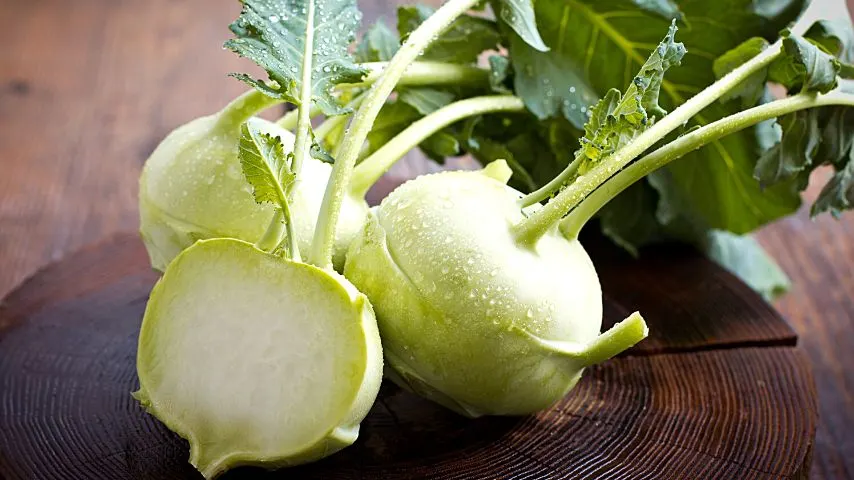
Another easy-to-grow plant, Kohlrabi, is planted indoors for 4 to 6 weeks before moving outdoors. A great harvest is possible if Kohlrabi is grown in a cool climate.
Kohlrabi’s a member of the cabbage family and has multiple types. It can have white, red, and purple varieties and mature early or late, depending on the type.
Most of its growth occurs during spring or fall.
The binomial nomenclature of Kohlrabi and the specifics of their growth include:
- Scientific name: Brassica oleracea
- Family: Brassicaceae
- Temperature: 60° – 80°F (15.55 ° – 26.66°C)
- Soil: well-drained organic loam
- pH: 6.0 – 7.5
- Environment: good sunlight
- Humidity: 90% – 95%
18. Eggplant
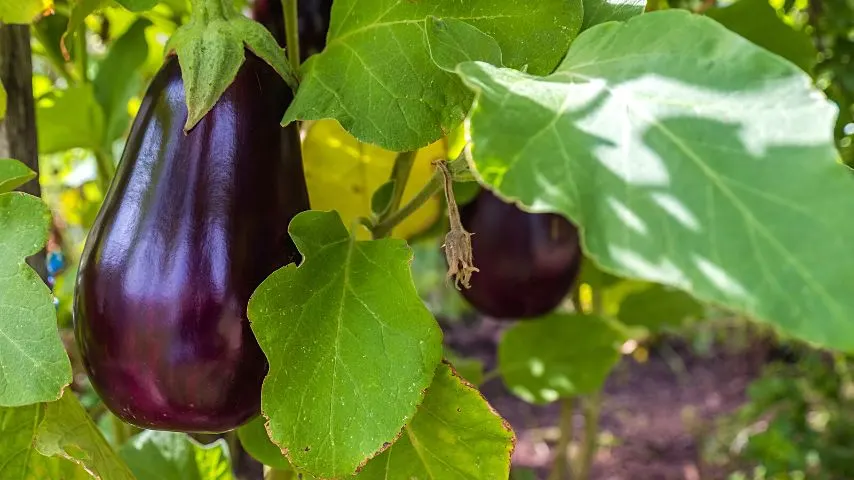
Adding eggplant to your vegetable garden can be very fulfilling as they are tasty and versatile.
They require hot weather conditions to flourish, so it is essential to remain attentive to soil and air temperature.
Moreover, Eggplant should be added to a suitable spot on the ground like full sun and well-drained fertile soil to ensure optimal growth.
The binomial nomenclature of the plant and the specifics of its growth include:
- Scientific name: Solanum melongena
- Family: Solanaceae
- Temperature: 70° – 85°F (21° – 30°C)
- Soil: Fertile, well-drained, sandy loam
- pH: 5.5 – 7.2
- Environment: full sun
- Humidity: 90%
19. Bell Peppers
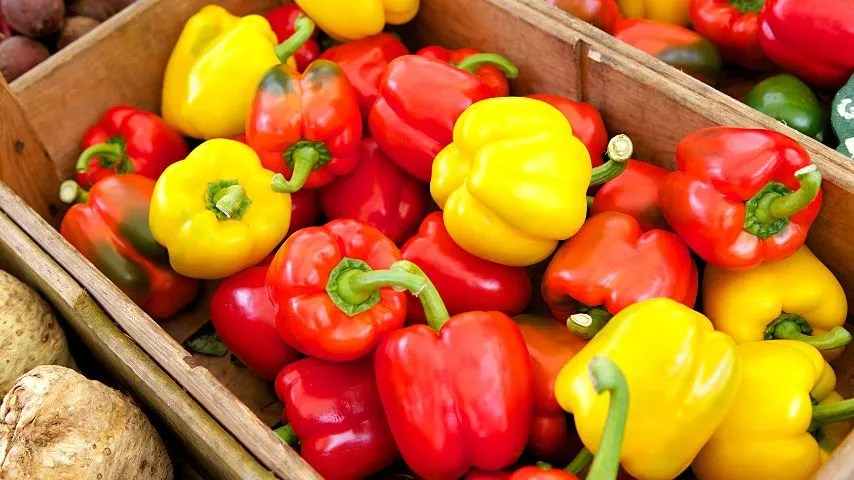
Bell peppers can work as a great addition to your vegetable plantation as they can be used in several ways, raw or cooked, and can also be frozen for use during winter.
Growing bell peppers isn’t very hard (even from scraps), but the temperature requires attention. It is found in distinct colors from green, red, and orange.
When they become thick and ripened, they are ready to be harvested.
The binomial nomenclature of bell peppers and the specifics of their growth include:
- Scientific name: Capsicum annuum
- Family: Solanaceae
- Temperature: 70° – 80°F (21.11° – 26.66°C)
- Soil: well-draining moist loamy soil
- pH: 6.5 – 7.0
- Environment: full sun
- Humidity: >95%
20. Broccoli
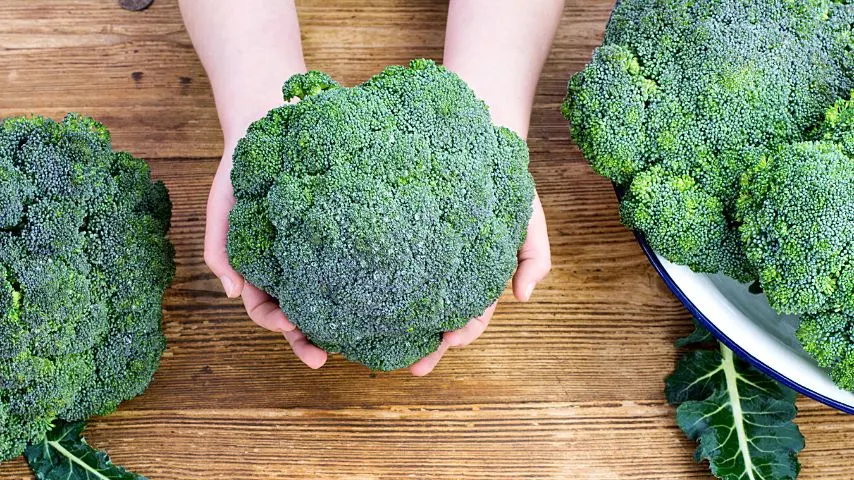
Broccoli is also a nutrient-rich, easy-to-grow vegetable. Planting it at the right time is the key.
Broccoli requires cool weather conditions and adequate light for proper growth. Moreover, good moisture can work wonders.
The binomial nomenclature of broccoli and the specifics of its growth include:
- Scientific name: Brassica oleracea
- Family: Brassicaceae
- Temperature: 40° – 70°F (4.44° – 21.11°C)
- Soil: well-drained sandy or a clay loam
- pH: 6.0 – 7.0
- Environment: full sun
- Humidity: 90% – 95%
21. Oregano
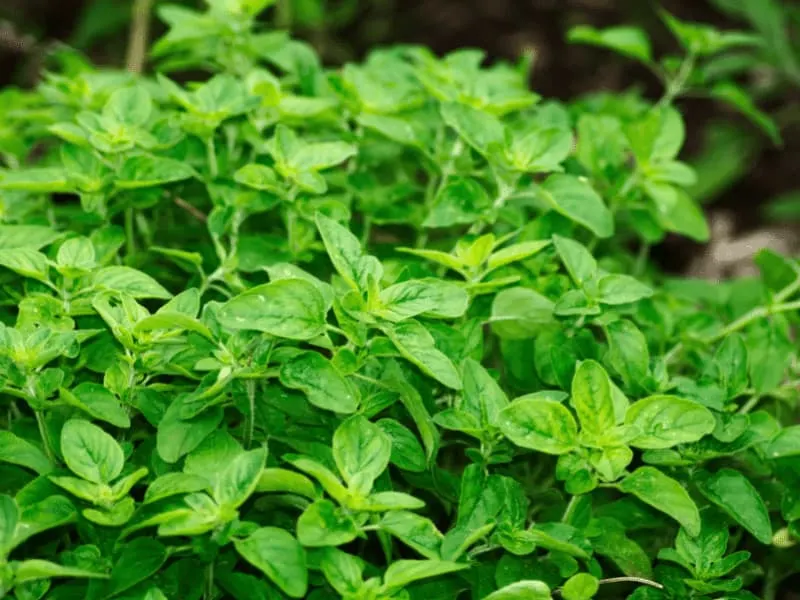
Oregano is a plant that grows best in well-drained soil but can withstand adverse conditions such as sandy and rocky soil equally well.
It needs a lot of direct sunlight, according to Gardeners World, but some shade in hot climates is beneficial, according to Almanac.
Use liquid fertilizer when the
Water thoroughly when watering but generally less than other herbs.
The best tip is to water once the top 2-3 inches of soil (5-7.cm) of soil are dry.
The binomial nomenclature of oregano and the specifics of its growth include:
- Scientific name: Origanum vulgare
- Family: Lamiaceae
- Temperature: 39.2° – 91.4°F (4° – 33°C)
- Soil: well-drained soil
- pH: 6.0 – 8.0
- Environment: full sun
- Humidity: 60% – 80%
Companion Planting
Companion planting attracts beneficial insects that feed on the plant pests, such as thrips, aphids, mealybugs, and spider mites.
Companion planting aims to maximize the harvest and select plants that benefit each other’s growth in the best case. A bare minimum is that they do not stunt or slow down their respective growth.
Companion planting was popular by the “Three Sisters” method, where the plants grow corn, beans, and squash n a perfect symbiosis.
Corn offers stability for the beans to grow, the beans hold the corn together, and the squash creates mulch and protects the soil, according to Nativeseeds.
The “3 Sisters Method” was used since the 1300s by the Native American Iroquois and adopted by the European settlers that arrived, according to Almanac.
Conclusion On Best Peppermint Companion Plants
The best peppermint companion plants are carrots, tomatoes, beans, marigolds, cabbage, geraniums, dahlias, sweet corn, radish, kale, beets, Brussels sprouts, peas, lettuce, salad burnet, squash, kohlrabi, eggplant, bell peppers, broccoli, and oregano.

Daniel has been a plant enthusiast for over 20 years. He owns hundreds of houseplants and prepares for the chili growing seasons yearly with great anticipation. His favorite plants are plant species in the Araceae family, such as Monstera, Philodendron, and Anthurium. He also loves gardening and is growing hot peppers, tomatoes, and many more vegetables.

